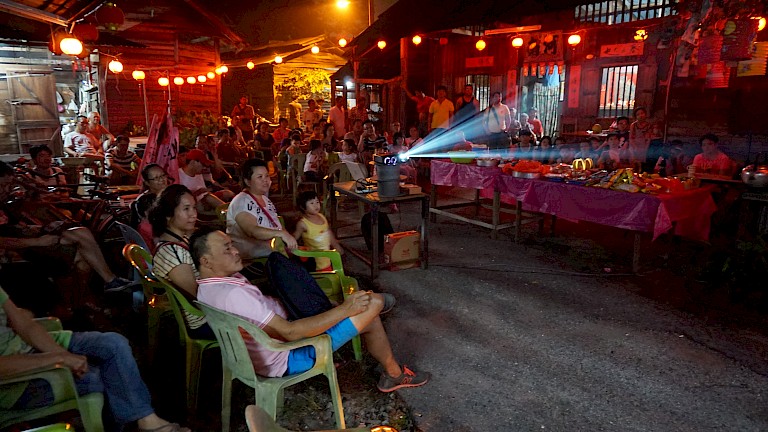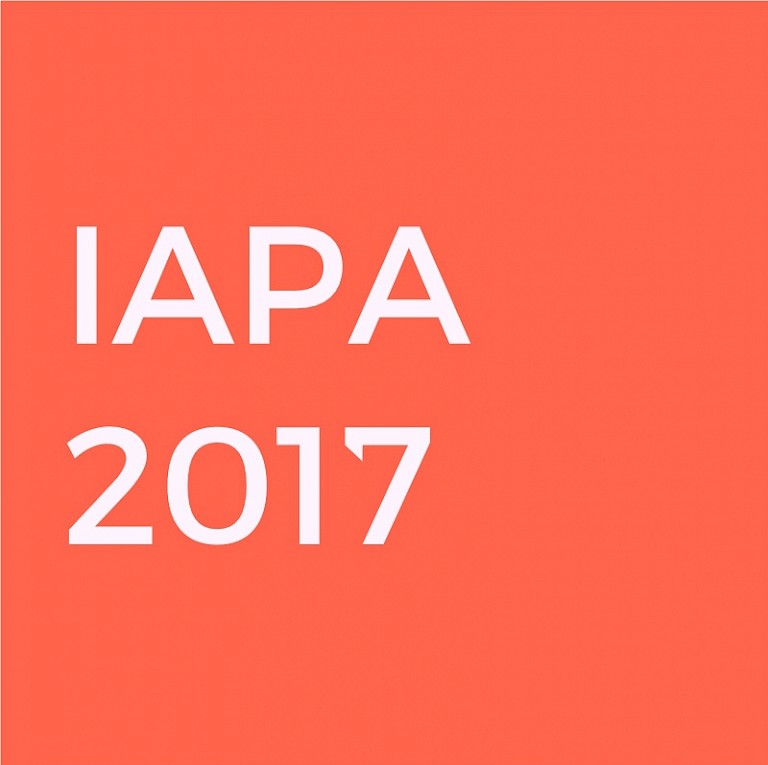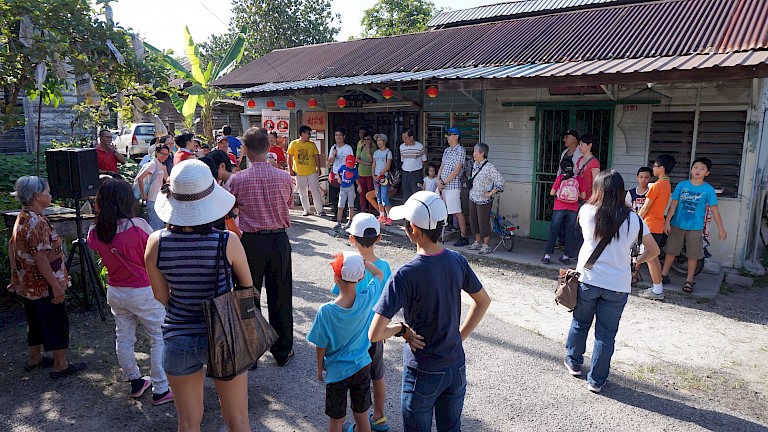



Since the beginning they had used the cultural programming, visual communication and storytelling to express their disagreement towards the authority. This way has been proven to be effective and more convenient for the villagers to adapt, as it is non-confrontational.One of the medium that Victor use to express is photography as it is able to convey the villagers concern of the current situation. Victor was also encourage the visitors and participants to preserve the village by capturing the life of Kg. Hakka Mantin with photography or other media; in which conveyed through workshop/seminar with mobile photographic exhibition and on-going documentation of the village programmes. In planning their activities, both Victor, SeongFoong and the villagers were relatively fluid in the terms of communication and approach process of setting up their strategies through discussion and joint planning between members. The first activities that they held was ‘Last Walk’, which the audience were guided to walk around the village and visiting specific homes for storytelling. The villagers were telling and sharing their memories on specific topics and the audience were actively encouraged to participate in stories exchange. Through this way both villagers and audience were in the same position of gaining each experiences. In order to meet their objectives of safeguarding the village community, Victor and SeongFoong assist them to advocate their needs of justice and recognition. This attempt has also reflected the intangible elements amongst the villager that includes the spirit, neighbourliness, traditional values of family and home, and as a way also to raise the awareness of their history between the villagers and the outsiders. As a result, the villagers were able to gain their renewed sense of identity, pride and dignity. In December 2013, they had also built an Interpretative Centre a centre place for each member of the village community to actively involve to meet and discuss their programme development along with interpreting themselves. The centre itself is significant for each village community member as it is the heart and the starting point of their activities.
At the beginning of their attempt to getting in contact with the villagers, Victor Chin and Chan Seong Foong found out that the villagers themselves were not aware of the historically potential value of Kg. Hakka Mantin.
They were only aware that the village that they have been living for generations were about to demolished by certain authority for their private purposes.
Through the first programme that Victor and Seong Foong designed, the villagers were able for the first time having their mind shifted and becoming conscious of their own village potential. The most important is they were able to perceive a new cultural perspective to maintain their historical and cultural value of their village. For the audience as they get involved and engaged with the Rakan Mantin activities they were able to experience an evoking memories of their historical family cultures.
Throughout the years, this movement were able to shown a significant result within the media awareness, although mostly were covered by Chinese media within the local Southern region and only within the cultural context for the mainstream media in Malaysia.
Another result was the authority has now showing their willingness to further listen and see Kg. Mantin plight and activities.
In spite of the positive result that has gradually shown, Victor and Seong Foong admit that this movement is still not yet meet their objectives. However they believe that the commitment between artists and stakeholders is the key in sustaining their attempt until they met their objectives.
As a community engaged arts group, Rakan Mantin were participated and presented in the Community-engaged Arts Regional Exchange Meeting and Roundtable organised by Arts-Ed in Penang both in 2014 and 2015. Also it was presented at an International Conference : Reflection on Development and Beyond – Exploring Alternatives to Social Progress organised by Genta Media Sdn Bhd together with REFSA (Research for Social Advancement), which highlighted on how groups like Rakan Mantin has encouraged people to reflect and redefine urban development, public space, collective memory, cultural preservation and interaction among communities.
The project was initiated by Victor Chin, who was previously has initiated another movement known as Rakan KL that specify their reaction towards the demolition area of Chinatown in Kuala Lumpur for MRT construction purposes. Altough in the end the movement itself was not able to met their first objectives to save the heritage and cultural place from the the demolition.
As the founder of Rakan movement, Victor Chin has specific interest in urban conservation. Therefore when he discover there has been a threatened village at Kg. Hakka Mantin from news report and social media, he and Chan Seong Foong, his collaborator felt the urge to made an action.
They were then starting to make a contact with the villagers and connected with PSM (Parti Socialis Malaysia) as the advocacy drivers. Rakan Mantin movement were using cultural programmes and utilising visual communication to spread the awareness. Victor Chin and Chan Seong Foong themselves were able be accepted and trusted by the villagers through regular visits and intense discussions.
Through out three years of the movement, this strategies were adopted very well among the villagers whereas the fighting to resist the demolitions through demonstration and fighting the authority was difficult to follow.
In spreading the awareness, Rakan Mantin was using Facebook network as an attempt to organise the volunteers and project collaborators to participate and get involved with the activities held at Kg. Hakka Mantin.
Victor Chin and Chan Seong Foong were designated the programmes to raise the public awareness and getting them engaged with the villagers’ plight.
In 2013 they built an Interpretive Centre that act as the heart of their activities, a multipurpose space that was used by the villagers from generating discussion up to culinary activities that can represent the culture of Kg. Hakka Mantin.
The group itself were self funded and had their activities funded through charitable activities, fund raising and voluntary working from individual charity and goodwill.
All copyright belongs to Shanghai Academy of Fine Arts, Shanghai University.



